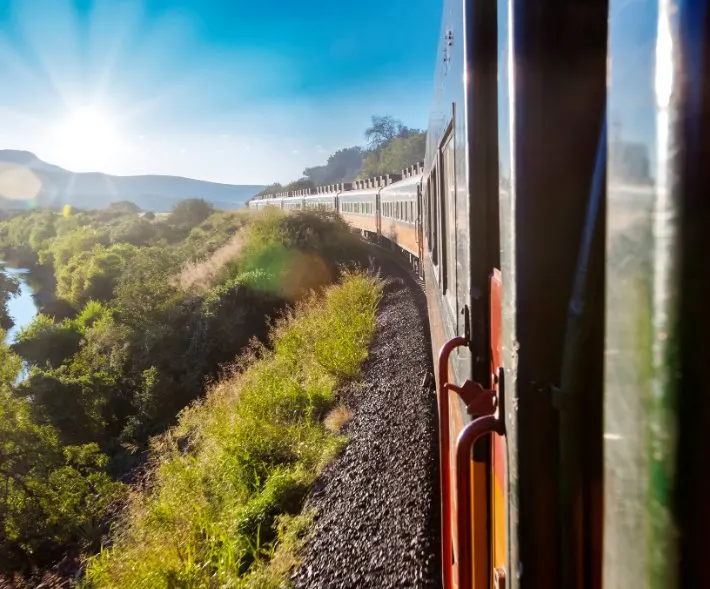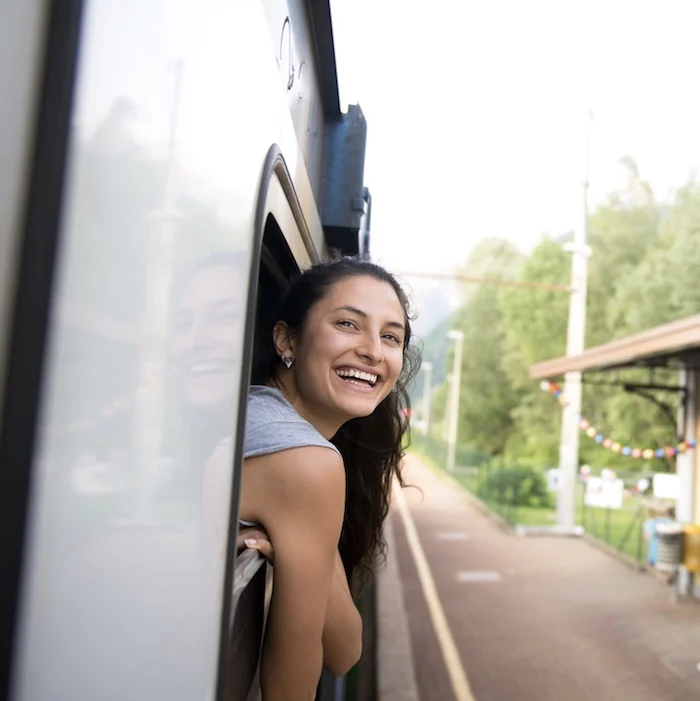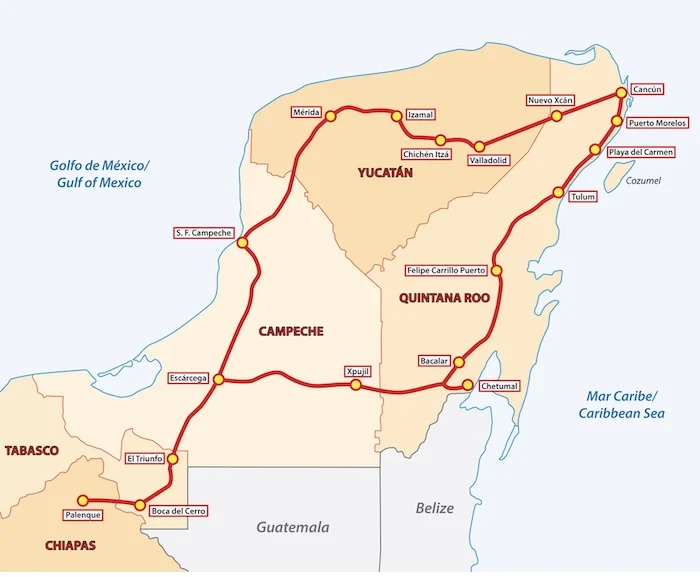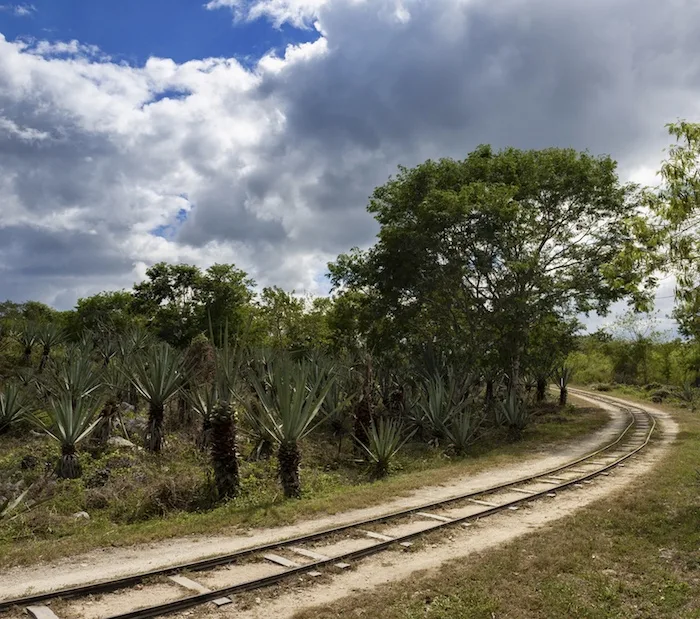Work on the northern section of the highly anticipated Maya Train is to begin in October, confirmed Head of the National Fund for the Promotion of Tourism (Fonatur), Rogelio Jiménez Pons this week. This part of the project will see the first of the new railway lines laid between the key tourist destinations of Cancun and Playa del Carmen.

What Is The Maya Train Project?
The Maya Train, as reported previously in The Cancun Sun, is a rail network that will circle around the Yucatan Peninsula. Funded primarily by the region’s tourist tax, it was estimated the project would cost around $8 billion to complete, although it’s looking likely the final cost will vastly exceed this sum.

The full route will link up the most popular tourist destinations in Quintana Roo and Yucatan states, such as Cancun, Tulum, Playa del Carmen, and Chichen Itza. It will also include stops in lesser-visited towns in Campeche, Chiapas, and Tabasco states.
Eventually, it’s hoped the Maya Train will make travel in and around the southeastern states of Mexico quicker and more convenient, encouraging visitors to travel further afield and explore more of the country.

How Is Construction Of The Maya Train Network Progressing?
Work on the Maya Train project has been ongoing since 2018, and it is making headway despite significant opposition and delays along the way.
Some indigenous groups have expressed fears about the potential for looting items of historical and cultural significance during the development of the railway lines.
Wildlife activists have also voiced opposition to the scheme, as they claim it will damage the region’s flora and fauna. They also believe it will have a negative effect on the Yucatan’s water supply, which mainly comes from underground river systems. Despite the concerns raised, preliminary Maya Train works have been carried out at various points along the proposed route, and further construction is being expedited in order to meet the planned launch in 2023.

Northern Section Of The Maya Train
The northern section of Maya Train construction, which will link Cancun to Playa del Carmen, is arguably the most important section of the entire route and will certainly be one of the best used.
A traditional Mayan ceremony took place in Playa del Carmen this week asking for Mother Earth’s permission for the project. This ceremony has also been carried out in other parts of the Yucatan when Maya Train construction was due to begin. It’s an important way to secure buy-in from communities who may be wary of the scheme, but who will benefit from the additional jobs and opportunities it will bring.
Before starting work on the train line itself, the first focus has been on the construction of alternative roadways. This is essential to keep traffic running smoothly between the region’s most-visited towns, sites, and attractions. The alternate roads are expected to be completed in a matter of weeks.

Work will then begin constructing the overpasses on which the trains will run, followed in November by 9-meter columns that will support the overpasses.Sinkholes, which have plagued the current Cancun-Tulum highway, and could be a continuing issue for the Maya Train without careful monitoring, will be rectified by November. Other highway repairs are expected to take up to two years to complete.

What Comes After The Northern Section Of The Maya Train?
Once the northern section of the line is completed, work will begin on the southern Playa del Carmen to Tulum sector of the train. The north and south sectors together will cover 121km of the route’s total 1500km length, and this section of the line will be fully electric.

Plan Your Next Cancun Vacation:
Traveler Alert: Don’t Forget Travel Insurance For Your Next Trip!
Choose From Thousands of Cancun and Riviera Maya Hotels, Resorts and Hostels with Free Cancellation On Most Properties
↓ Join the community ↓
The Cancun Sun Community FB group has all the latest travel news, conversations and tourism Q&A’s for the Mexican Caribbean

Subscribe to our Latest Posts
Enter your email address to subscribe to The Cancun Sun’s latest breaking news affecting travelers, straight to your inbox.
